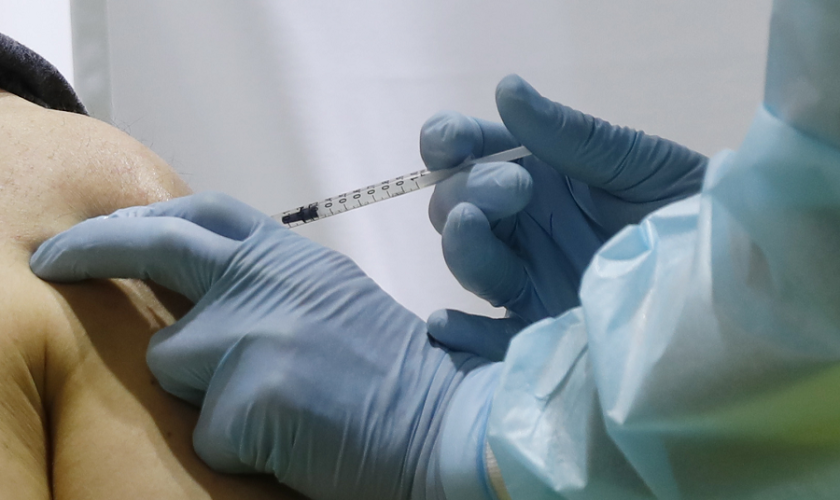Ever since the acceptance of the first Covid-19 vaccine by the World Health Organization (WHO) in December 2020, awareness regarding vaccinations rose dramatically among the general public. People started being more interested in how vaccines are made, how they are formed, the immunity various vaccines provide, and how vaccines are administered. There are many controversies regarding the aspiration that is commonly performed prior to the vaccine administration. In this article, we will discuss why aspiration is practiced while giving injections, the risks and benefits around this, and finally – is it really needed.
IM or SC?
Let us start with some key facts regarding the injection of vaccines or medications. Most injections come in the form of a syringe and a needle, with the vaccination or medication within the syringe. There are 2 main administration routes for vaccines or medications – Intramuscular (IM) and subcutaneous (SC). Intramuscular injection is used to deliver the vaccine or medication deep into the muscles, which are rich in blood supply. This administration technique helps the substance to be absorbed into the system quickly. Subcutaneous injection is appealed when the medication or vaccine only has to be delivered to the subcutis layer, which is the fatty layer below the skin but above the muscle layer. Each vaccine will have a recommended injection route by the manufacturer. Some examples of IM injections are the Hexaxim (DTaP-IPV-HB-Hib) vaccine and Hepatitis A vaccine, while some examples of SC injections are the Measles, Mumps, Rubella (MMR) vaccine and the chickenpox vaccine (Varivax). Some medications that are given via the injection routes include epinephrine, insulin, and many more [1].
Why is aspiration needed?
Aspiration is the act of pulling back the syringe after poking the needle into the flesh. It is often recommended for intramuscular injections to ensure that the tip of the needle did not puncture or enter a blood vessel. The rationale behind this is initially for medication administration such as epinephrine, which is used to treat allergic reactions. If epinephrine is injected into a blood vessel, it might lead to life-threatening consequences such as arrhythmia. Aspiration is therefore introduced into the safe practice for administering injectables, including vaccines. However, there are no specific benefits of aspiration, and no study has been done to determine the relationship between aspiration and vaccine safety. The growing use of auto-disable (AD) syringes for vaccines further emphasized this fact. AD syringes cannot be pulled back once used, thus no aspiration was needed. Thus far, no adverse events have been observed with these syringes [2].
What are the benefits and risks of aspiration?
Sites for vaccination
There are several recommended sites for intramuscular injections based on age group. For toddlers below or at the age of two, the anterolateral thigh is preferred. For children above three, the deltoid muscle or the anterolateral thigh can both opt. For young adolescents or adults, intramuscular injections are routinely given to the deltoid muscle. Subcutaneous injections are administered at an angle to reach the subcutis layer. In infants below a year old, the thigh opts. In adults, subcutaneous injections can be given to the upper outer triceps [3].
Consensus
An extensive review of general guidelines revealed that aspiration is not necessary due to several reasons. First, the usual injection sites do not have major vessels, thus the incidence of puncturing one is small. Besides, the simple act of aspiration could result in more pain for the patient. This is more so when vaccinating children or infants [2].
References
- Centers for Disease Control and Prevention (CDC). Administer the Vaccine (s). Healthcare Providers/Professionals. https://www.cdc.gov/vaccines/hcp/admin/administer-vaccines.html
- Sepah, Y., Samad, L., Altaf, A., Halim, M. S., Rajagopalan, N., & Javed Khan, A. (2014). Aspiration in injections: should we continue or leave the practice?. F1000Research, 3, 157. https://doi.org/10.12688/f1000research.1113.3 https://www.ncbi.nlm.nih.gov/pmc/articles/PMC5333604/
- Centers for Disease Control and Prevention (CDC). Kroger, A. T., Duchin, J. S., & Vázquez, M. (1917). General best practice instructions for immunization: best practices guidance of the Advisory Committee on Immunization Practices (ACIP).
https://www.cdc.gov/vaccines/hcp/acip-recs/general-recs/administration.html

